Fortifications of Vauban: The Citadel of Arras was built by Sébastien Le Prestre de Vauban in the 17th century and was ordered by King Louis XIV, the king of France, also known as the Sun King. The citadel was one of the first constructions of Vauban. It took about two years to build. It is situated on a strategic location at the confluence of two rivers so that the surrounding area could be flooded in case of an attack, they were also used as a water source for the citadel and to fill the defensive moat. Just like the other Fortifications of Vauban, there were underground chambers, some of them were used as a prison in the 18th century. The Citadel of Arras was constructed in the shape of a pentagonal star, it was built to protect France against the enemy, in that time the Spanish Netherlands. During WWI, Arras was used by the Allied Forces to park tanks for the Battle of Arras (1917). The second Battle of Arras took place in 1940 when the British tried to stop the advancing German Army. In the citadel there is a impressive memorial dedicated to the 218 patriots who were executed by the Germans in WWII between 1941 and 1944. The Citadel of Arras was used by the French Army until 2010. Today, the buildings are used for housing and recreation, the citadel is freely accessible. The Citadel of Arras is part of the UNESCO World Heritage: Fortifications of Vauban. Twelve Fortifications of Vauban gained the status as a UNESCO World Heritage in 2008.
www.werelderfgoedfotos.nl © Copyright World Heritage Photos Classic Car Road Trip
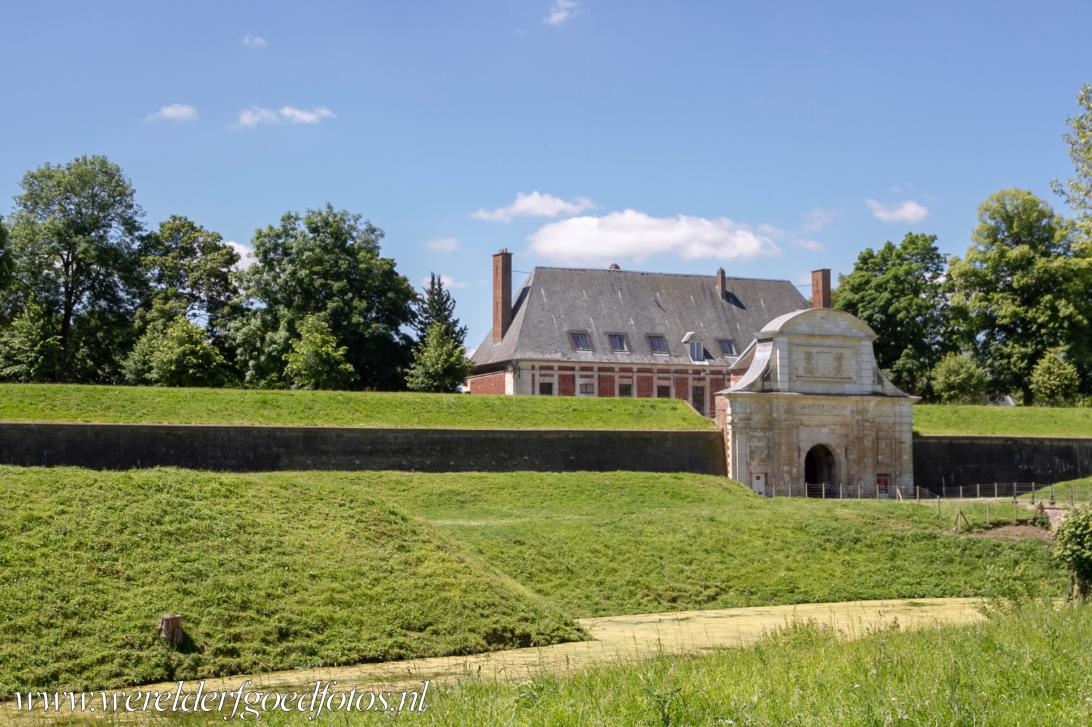
Fortifications of Vauban: The Citadel of Arras, the Porte Royale is the main gate. King Louis XIV, the king of France, ordered his military architect Sébastien Le Prestre de Vauban to build the Citadel of Arras. The construction took about two years, from 1668 to 1670. The citadel was built in the shape of a pentagon, a five pointed-star. The Citadel of Arras is one of the most important military works of Vauban.

Fortifications of Vauban: The Citadel of Arras, the Porte Royale is the main gate. King Louis XIV, the king of France, ordered his military architect Sébastien Le Prestre de Vauban to build the Citadel of Arras. The construction took about two years, from 1668 to 1670. The citadel was built in the shape of a pentagon, a five pointed-star. The Citadel of Arras is one of the most important military works of Vauban.

Fortifications of Vauban: The Citadel of Arras is surrounded by a moat. The citadel was built on a strategic location at the confluence of two rivers, the river Crinchon and river Scarpe, so that the surrounding area could be flooded (inundation) in case of an attack, the rivers were also used as a water source for the citadel and to fill the defensive moat. Some sections of the moat are still filled with water.
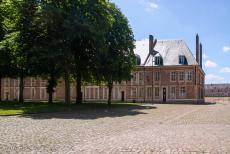
Fortifications of Vauban: The Citadel of Arras has seen more than three centuries of military history. The citadel could accomodate about 1,500 soldiers. The Citadel of Arras was used by the French Army until 2010. Nowadays, the citadel is freely accessible, the former military buildings have been converted into homes and recreational facilities. The citadel is now a city district of Arras and is surrounded by a large wooded area.
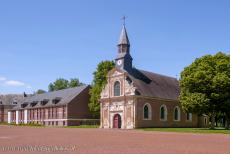
Fortifications of Vauban: The chapel inside the Citadel of Arras is dedicated to Saint Louis. The Chapel of Saint Louis was built in 1673 and later restored by Napoleon III. Between 1830 and 1866, the chapel was used as a storage room and an armoury. The chapel was damaged during WWI, restoration took place in 1922, but the damage caused by shrapnel can still be seen on the backside of the chapel. The Chapel of Saint Louis serves nowadays as a memorial.
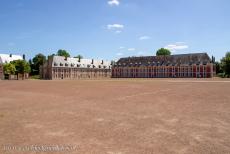
Fortifications of Vauban: The Citadel of Arras, the rectangular Parade Grounds are surrounded by brick buildings. Once, Arras was situated on the border between France and the Netherlands. Arras was once part of the Netherlands, it was annexed to France in 1659, the Dutch name of Arras was Atrecht. The French King Louis XIV feared an attack and ordered Vauban to build the citadel to protect France against the enemy, in that time the Spanish Netherlands.

Fortifications of Vauban: The Citadel of Arras, Le Mur des Fusillés is a memorial to 218 members of the Resistance, they were executed in the dry moat of the citadel during WWII, when France was occupied by Nazi-Germany. White plaques line the walls of the moat to commemorate the 218 members of the Resistance who were killed here by the Nazis between 1941 and 1944. The youngest victim was 16 years old, the oldest was 69 years old.
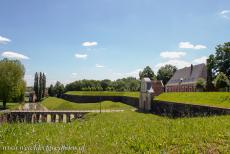
Fortifications of Vauban, Citadel of Arras: The Porte Royale seen from the Ramparts Path. The Bastion de La Reine and the Bastion de Dauphin were demolished in the 19th century. Although the pentagonal Citadel of Arras is no longer completely intact, it is an great example of a 17th century military construction. The Ramparts Path offers beautiful views over the citadel and the city of Arras.
